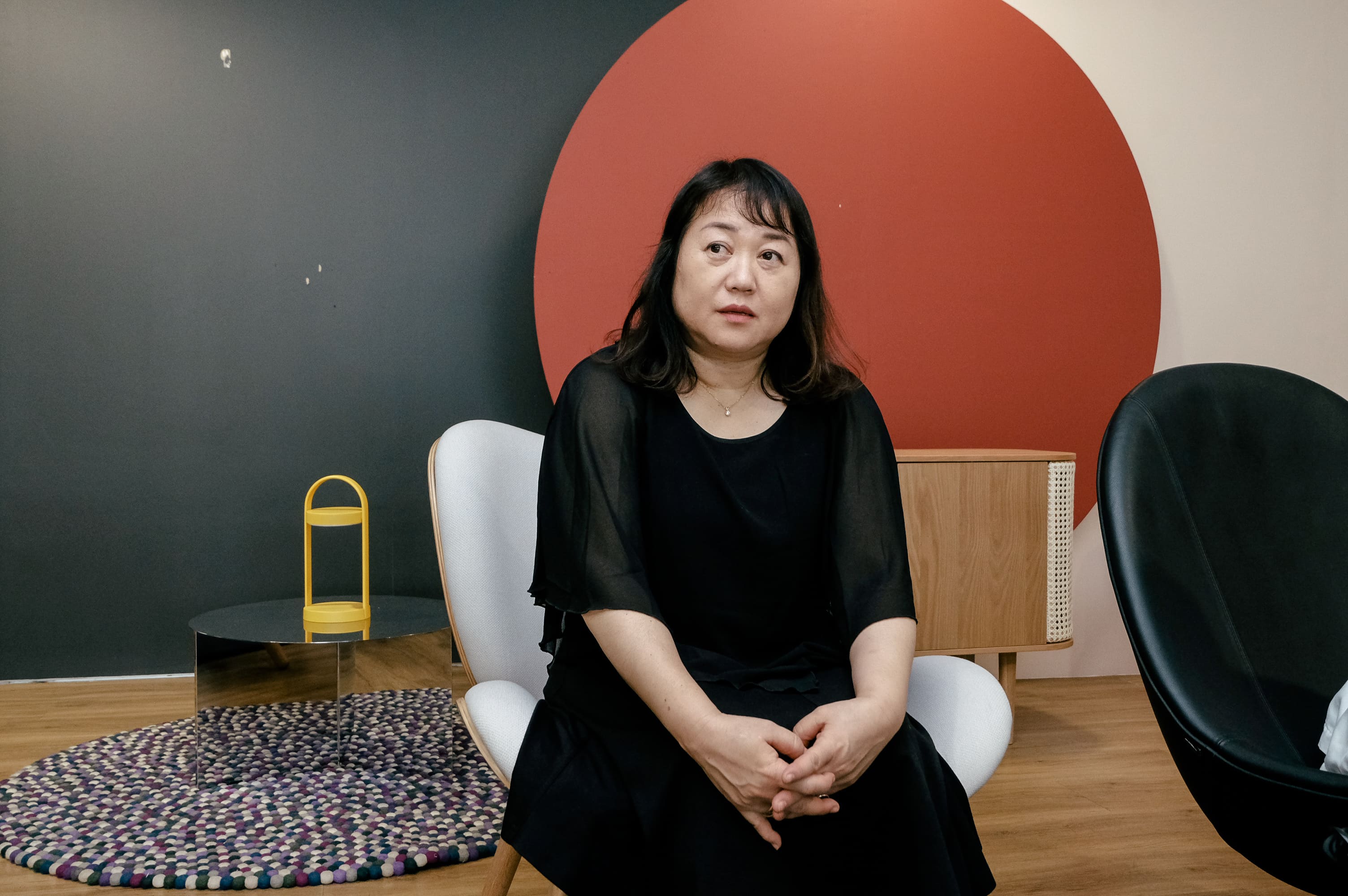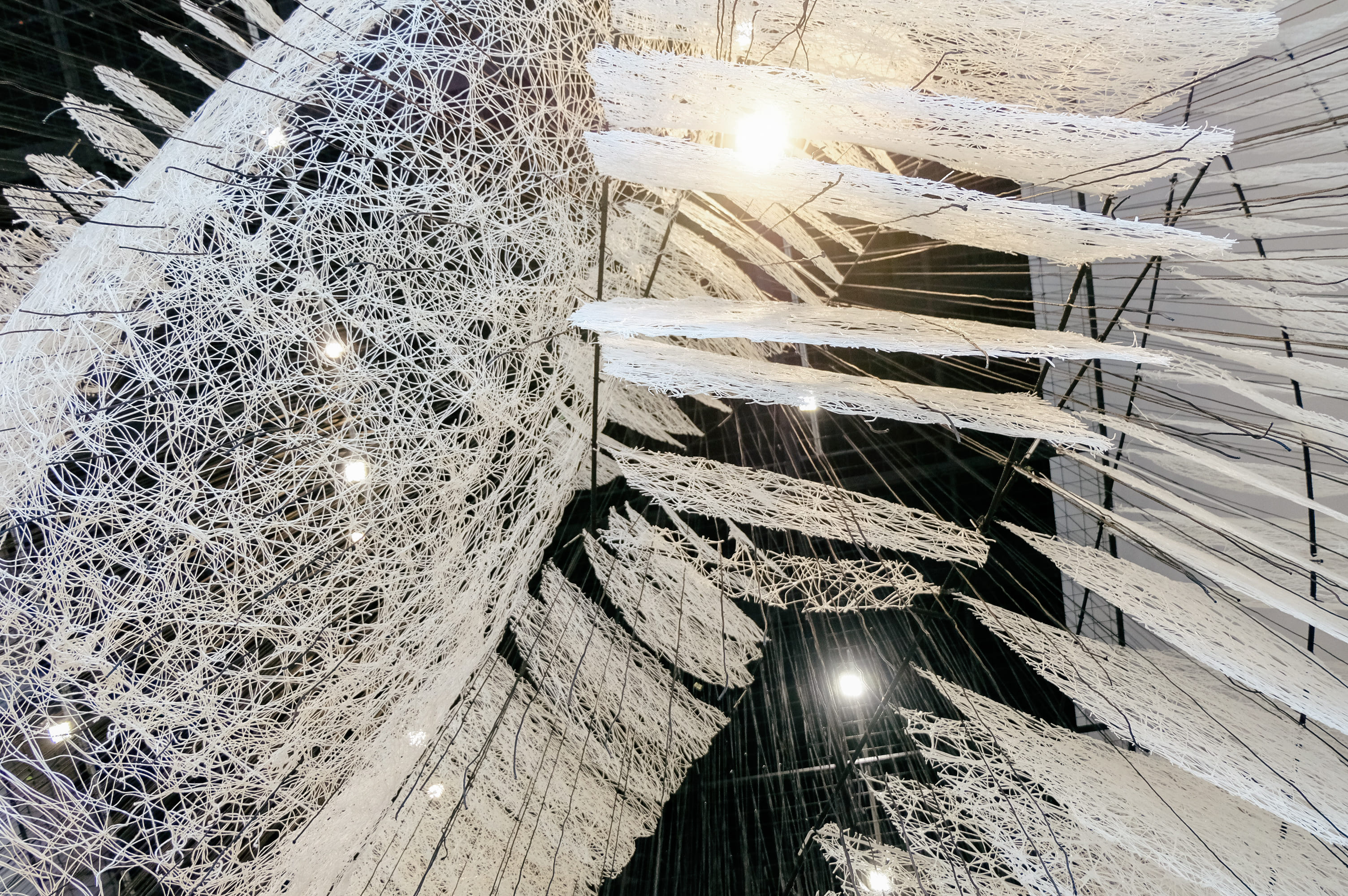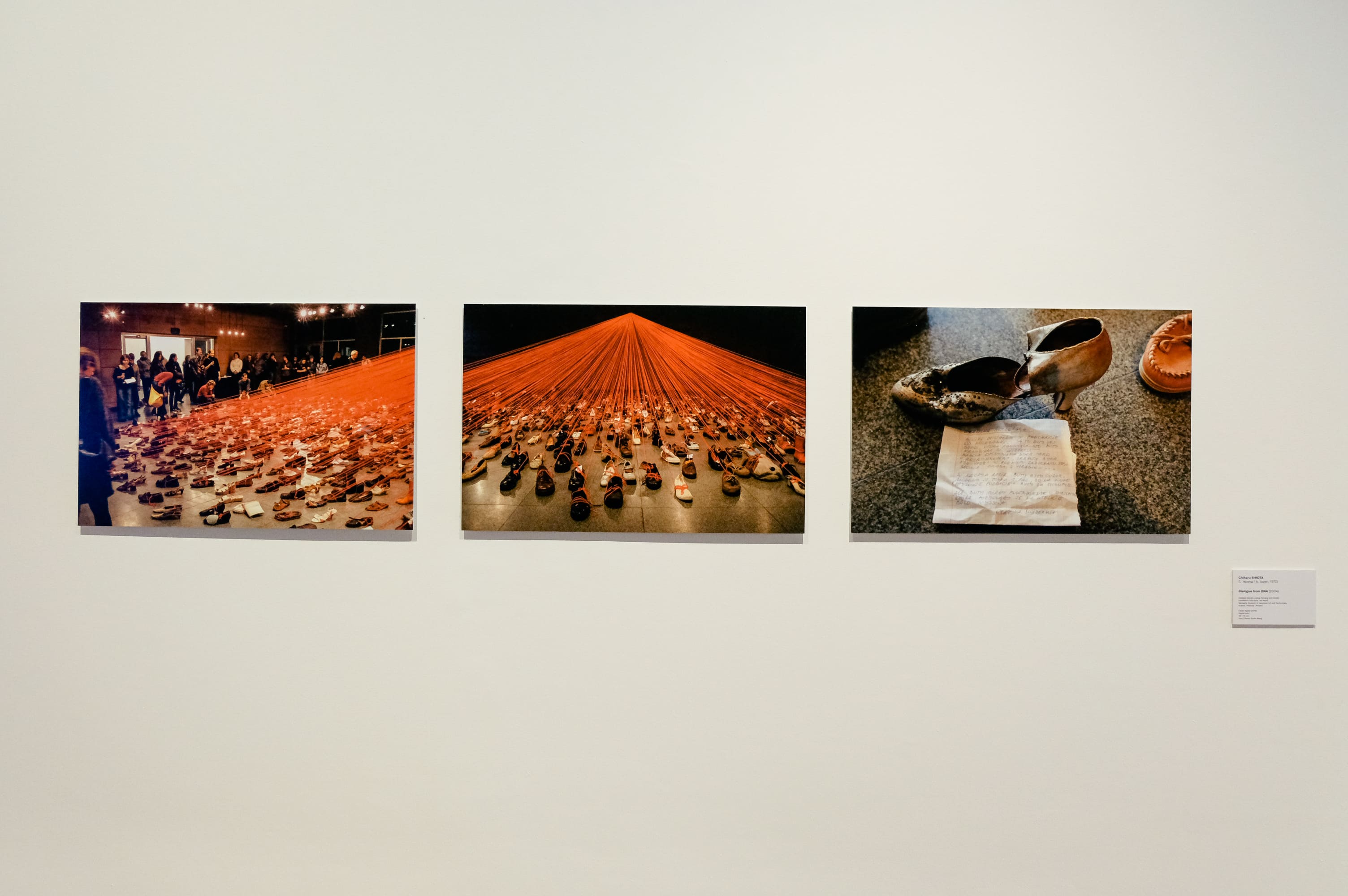
On Travel, Soul and Memory and How Art Connects Humans with Chiharu Shiota
We talked with Chiharu Shiota on how she views art, her largest solo exhibition Chiharu Shiota: The Soul Trembles and how it speaks the intertwining meaning of soul, travel, and memory.
Words by Whiteboard Journal
Words by Ibrahim Soetomo
Photos by Ardi Widja
Berlin-based artist Chiharu Shiota is known for her large-scale installations consisting primarily of red and black threads. Encompassing the intangible such as soul, memory, anxiety, and questioning universal concepts such as identity and territory. The travelling exhibition Chiharu Shiota: The Soul Trembles is her largest and most comprehensive solo exhibition to date. Initiated by Mori Art Museum, Tokyo, and curated by Mami Kataoka, Director of Mori Art Museum. Comprising not only thread installations, but paintings, sculptures, to performance documentations spanning twenty-five years of an artistic career. This is her first solo show in Indonesia, and Museum MACAN is the only host museum in Southeast Asia. Here we converse with her on how she connects soul, travel, and memory into all-encompassing artworks.
Chiharu Shiota: The Soul Trembles is organized by Museum of Modern and Contemporary Art in Nusantara (MACAN) and Mori Art Museum, Tokyo, curated by Mami Kataoka, Director of Mori Art Museum.
I have visited your exhibition and felt this indescribable sadness, especially in the installation. Do you often get this kind of response from your audience?
I think everyone feel different. If some people feel it is a bit sad, then it is sad. For me, I don’t give an answer at all for this one, because everyone is thinking different.
I started with private matters or private problems. But after my work is exhibited, this feeling is becoming not only my problem, but our problems. It becomes not only ‘I’, but ‘We’. When it becomes ‘We’, it becomes ‘Art’.
It becomes not only ‘I’, but ‘We’. When it becomes ‘We’, it becomes ‘Art’.
When did you start realizing that art is the best way to express the soul and personal tragedies?
When I was twelve years old I wanted to be an artist. Nothing else.
So since childhood, you are comfortable in expressing your self through art.
Yes.
You have a background in art and studied painting. But in your 20s, painting stopped being meaningful, and you want to make drawings in the air. So that’s why you use strings. Tell us about your journey through strings and threads to working with large-scale installations. And how did you weave meaning as you keep exploring it?
So, I wanted to be a painter, but painting is limiting. Then I started painting with three-dimensions. I chose strings because it is a very cheap material. It is very easy to buy as a student. I started to weave like making drawings in the air. When I make drawings in the air, I feel like I can’t follow the lines. I feel the work is done. It’s finished.
So even if I make installations using space, I feel like it is still a drawing, a painting. The world is not the same, but what I show is similar.





You often incorporate daily objects into installations. Do you think your childhood and immediate upbringing influence your artistic practice, since this is the time when we had fun collecting our favorite objects?
When I was a child, I had fun collecting many things, but now it is more about memories. I collect keys, clothes, or suitcases, and there are lots of memories from their owners. It is more interesting to feel and read stories from their owners.
The traveling exhibition Chiharu Shiota: The Soul Trembles is, so far, your largest and most comprehensive exhibition to date. Comprising works from your twenty five-year of career. What does ‘traveling’ mean for your art?
When I’m back in Japan, I can see more of myself. I can see more of my identity. When I’m in Japan, I never doubt that I’m a Japanese. But when I live in Germany, or when I’m travelling to different countries, I see the people. There I can see that I’m an Asian, a Japanese, yet I can still see more of my identity, more of myself. This is very important for me to make art.
How do you view your artistic career so far?
I don’t know… I’m still in the making. And I just keep doing exhibitions, to the next, and to the next.
My work is not political, but more to poetic.
Do you think this is similar to your work ‘Uncertain Journey’?
Yes, yes. I keep traveling.
How do you view the relationship between memory and soul?
When I did a show in Fukushima, someone saw a landscape in Fukushima and he immediately remember my work. I don’t know but something is connected. Others experience the same when they see the burnt piano. For me it’s very important in making this feeling.
Memories are different to each other, especially for children. In my video talking about soul, the children gave amazing answers. When a nine or ten-year old is talking about soul, it is a very pure thinking. If we keep this feeling, maybe we can never make wars.













Speaking of recent global art scene, how do you view the rising contemporary art from Asia or Global South?
A lot of contemporary art came from the United States of Europe, but now Asia economy is getting bigger. So I think we don’t need import from the States or Europe to Asia. We already have contemporary art here.
You were born in Japan, are based in Berlin, and have exhibited here and there. Have you ever experienced an ideological clash in different regions?
My work is not political, but more to poetic. It starts from private matters. So my work is more general, more universal.
Humans start drawing before writing. We are all artists before we want to write, before we want to speak.
When did you start to realize that art is universal?
Humans start drawing before writing. We are all artists before we want to write, before we want to speak.
You keep travelling and making art. What is your next project?
I will have a show in Denmark and also in Switzerland. I have two more shows this year.
–
Chiharu Shiota: The Soul Trembles
Museum MACAN
AKR Tower, Jl. Perjuangan No.5,
Jakarta Barat, Jakarta, 11530
Selasa–Minggu
10.00–18.00











